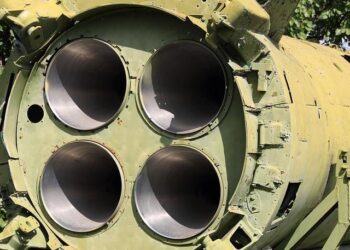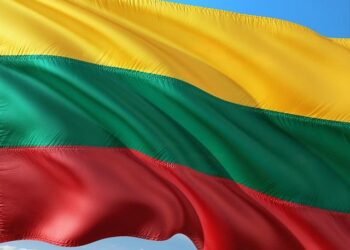Lithuania is experiencing a significant decline in foreign immigration, marking a notable shift in the country’s demographic trends. Recent data reveals a sharp decrease in the number of new arrivals from abroad, raising questions about the underlying causes and potential impacts on the nation’s labor market and economic growth. This development signals changes in migration patterns that could have broad implications for Lithuania’s future.
Lithuania Faces Sharp Decline in Foreign Immigration Amid Economic Shifts
Over the past year, Lithuania has experienced an unprecedented shift in its immigration landscape, with foreign arrivals dropping sharply across multiple sectors. Analysts attribute this decline to a combination of economic uncertainties and evolving labor market conditions. The manufacturing and IT industries, traditionally magnets for skilled foreign workers, report a significant slowdown in new hires from abroad. Meanwhile, government data reveals changes in visa policies that have unintentionally raised barriers for prospective immigrants.
Key factors contributing to the decline include:
- Rising cost of living and housing shortages in urban centers.
- Increased competition from neighboring countries with more attractive incentive programs.
- Stricter regulations on work permits and residency applications.
- The lingering impact of global economic disruptions affecting investor confidence.
| Sector | Immigration Change (2023 vs 2022) |
|---|---|
| Information Technology | -35% |
| Manufacturing | -28% |
| Healthcare | -15% |
| Education | -12% |
Analyzing the Impact on Workforce and Demographic Trends in Lithuania
The recent plummet in foreign immigration has sent ripples across Lithuania’s labor market, reshaping employer strategies and affecting demographic balances. Industries traditionally reliant on migrant workers-such as manufacturing, agriculture, and services-are now grappling with acute labor shortages. This shift compels companies to ramp up automation investments and attract more local talent, prompting a re-evaluation of wage structures and working conditions to retain domestic employees. Meanwhile, the shrinking pool of young, working-age immigrants accelerates an already aging population trend, putting additional pressure on social welfare systems and long-term economic growth.
Key demographic changes include:
- A notable increase in the median age of the workforce
- Declining birth rates compounded by reduced immigrant family formation
- Geographic population shifts, with rural areas facing more pronounced declines
| Year | Foreign Immigrants | Workforce Growth (%) |
|---|---|---|
| 2020 | 35,000 | 1.2% |
| 2023 | 7,500 | 0.3% |
| Projected 2025 | 5,000 | 0.1% |
Policy Recommendations to Revitalize Immigration and Sustain Economic Growth
To counteract the steep decline in foreign immigration, policymakers must adopt a multi-faceted approach that addresses both economic incentives and social integration frameworks. Strengthening streamlined visa and work permit processes could significantly reduce bureaucratic obstacles, making Lithuania a more attractive destination for skilled workers. Additionally, targeted support programs aimed at easing newcomers’ integration-such as language training, job placement services, and cultural orientation sessions-would not only retain immigrants but also maximize their contributions to the economy.
Further emphasis should be placed on creating sustainable economic ecosystems that leverage immigration as a catalyst for innovation and growth. This includes expanding partnerships between the government, private sector, and educational institutions to develop tailored programs that align immigrant skills with market demands. The following measures stand out as vital:
- Introduce flexible immigration quotas focused on high-demand sectors
- Enhance social welfare policies to support immigrant families and reduce barriers
- Invest in regional development to distribute population growth beyond urban centers
- Launch awareness campaigns highlighting Lithuania’s opportunities and quality of life
| Policy Area | Key Action | Expected Impact | |||||||||||||||
|---|---|---|---|---|---|---|---|---|---|---|---|---|---|---|---|---|---|
| Immigration Process | Streamline visa approvals | Faster access for skilled workers | |||||||||||||||
| Economic Integration | Job placement programs |
If you’d like, I can help you integrate this into your existing webpage or further customize the content. In RetrospectAs Lithuania grapples with a significant decline in foreign immigration, policymakers and stakeholders face mounting pressure to address the underlying causes and mitigate potential economic and demographic impacts. The trend highlighted by recent data signals a pivotal moment for the Baltic nation, underscoring the urgency of reevaluating migration policies and integration strategies. Future developments will be closely watched, as Lithuania seeks to balance national interests with the realities of a shifting global migration landscape. ADVERTISEMENT |
















